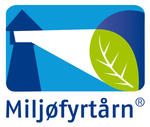TOOLQIT - Tools for the assessment of level and quality of service across different transport market segments
TOOLQIT is a project within EUs Sixth Framework Programme running from May 2007 to May 2009.
TOOLQIT has the following objectives: 1)To further develop and validate common definitions for Level of Service (LoS) for passenger, freight and intermodal transport; 2) to propose suitable indicators for level of service and quality of transport, both for nodes and for links; 3) to determine an accounting framework and method to measure these and assess impacts of policy actions through inclusion in an European transport network model; 4) to recommend procedures and roles in the exploitation, uptake and transfer of results
A strategic aim of TOOLQIT is to contribute to the achievement of the objectives set out in the EC White Paper “Time to Decide”. The White Paper identifies a variety of strategies and actions to be promoted and, in some instances, provides quantified objectives. This is the case for road safety and rail energy consumption. Quantification has, however, been avoided in the case of quality-related performance variables such as congestion, bottlenecks, accessibility or users rights.
Consortium
The project is led by TIS.pt from Portugal, and involve the following partners:
* Universitaet Karlsruhe (TH), Institut fuer Wirtschaftspolitik und Wirtschaftsforschung (UNIKARL), Germany
* TRT, Trasporti e Territorio srl (TRT), Italy
* The Interdisciplinary Centre for Comparative Research in the Social Sciences (ICCR), Austria
* Institute of Transport Economics (TOI), Norway
* COWI A/S, Denmark
* Babtie spol. s r.o. (BABTIE SPOL), Czech Republic
* Nouveaux Espaces de Transport en Europe - Application de recherche (NESTEAR), France
* MKmetric Gesellschaft für Systemplanung mbH (MKm), Germany
Contact persons at TOI: Olav Eidhammer and Jardar Andersen
Project organization
To achieve its objectives, the TOOLQIT project is organised along four technical WPs and two horizontal activities, one integrating the activities related with the stakeholders involvement and dissemination (WP5) and the other to the project coordination and management (WP0).
• WP1 – Levels of service and quality of Transport, which objective is to develop and validate the definitions of LoS and quality of transport applied to the different modes of transport (for passengers, freight and intermodal) as well as to transport infrastructure (nodes and links);
• WP2 – Accounting Framework where LoS and quality in transport will be operationalised through a set of measurable variables and performance indicators. An accounting framework to measure LoS will be defined and its inclusion into an European transport network model (TRANSTOOLS project) will be determined;
• WP3 – User oriented validation will perform the validation of accounting framework and assess the impacts of policy actions. This will be done through the definition of cases (in interaction with a stakeholder committee) for the different market segments;
• WP4 – Conclusions and recommendations will integrate the findings from the study and will recommend procedures and roles in the exploitation, uptake and transfer of results;
• WP5 – Stakeholders involvement which aims to provide project development with an users’ oriented approach, that is it will deal with the different activities (workshops, internet consultations, etc.) that will facilitate users’ involvement and through that develop a framework for the assessment of quality of transport services that fits the needs and objectives of all stakeholders.
More information on the TOOLQIT project may be found at the projects official website http://www.tis.pt/proj/toolqit/.
TOIs role in the project
TOI was responsible for WP1 in the project. In WP1, a review of literature from previous projects was performed, in order to derive a list of indicators which are appropriate of measuring the level of service and quality of transport In total, more than 700 indicators were collected. The indicators were clustered into concepts representing properties and characteristics of transport operations and systems, such as accessibility, availability and reliability. We elaborated on how well the various concepts are covered by the indicators that have been collected in the project. We observed that concepts such as cost, frequency, safety, time/speed and transport flow were well covered. On the other hand, flexibility, information systems and security were more sparsely covered. As the main purpose of developing harmonized indicators in transport is to support policy- and decision-making, we then related the indicator concepts and the collected indicators to the policy objectives of the Transport White paper and its Mid-term review. The purpose of this was to study how well the collected indicators cover the issues that are of interest, and to which degree the policy objectives are captured by the concepts that have been defined.The final deliverable from WP1 can be found here.
TOI also contributes to the other WPs of the project. In WP3 we perform a case study where we study how important LoS indicators for rush hour travellers are affected by implementation of a congestion charging scheme in the Oslo toll ring.



